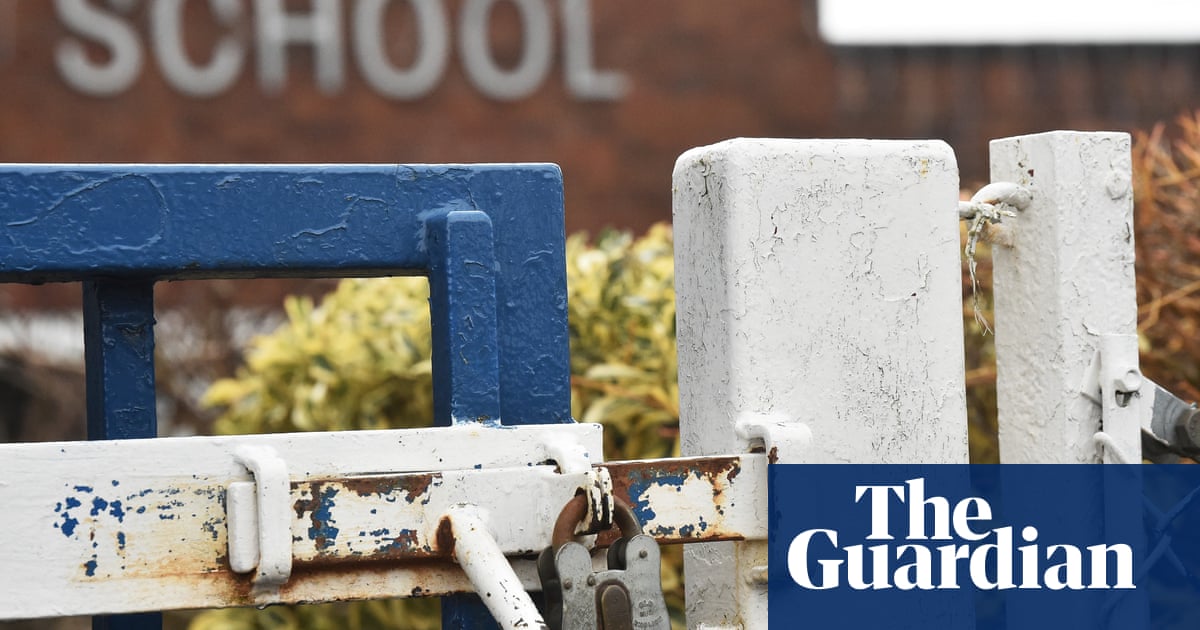
Ministers have ordered schools to immediately shut buildings made with aerated concrete until safety work is undertaken. The decision could see thousands of pupils at more than 100 schools in England begin the autumn term taking lessons remotely.
What is reinforced autoclaved aerated concrete (Raac)?
Raac is a lightweight, bubbly form of concrete that is usually found in roofs and occasionally in walls and floors. It looks like standard concrete but compared with the “traditional” reinforced material, which is typically denser, Raac is weak and less durable. The material was favoured in construction projects because of its lightweight, thermal properties.
Where is Raac found?
Schools, hospitals and various other public buildings from the 1950s to the mid-1990s were built using Raac. A National Audit Office (NAO) report earlier this year said the concrete had been confirmed in at least 65 schools in England after 196 completed surveys, with 24 requiring emergency action.
The number of schools at risk was expected to increase significantly when the results of surveys of 572 schools with suspected Raac were completed by the Department for Education (DfE).
More than a third (38%) of school buildings (24,000) are past their estimated design lifespan, according to the NAO.
Why is it dangerous?
Experts say the building material is less durable than reinforced concrete and deteriorates over time, so is susceptible to sudden failure. It has a life expectancy of little more than 30 years and this means buildings constructed from the 1950s to the 1990s that have not been checked by structural engineers are at risk of collapse.
The danger has previously been considered so great that a number of schools have had to close, either fully or partly, while others have required emergency propping up owing to fears of collapse.
The material is also prone to collapse when wet, which can happen if there are leaks in a building’s roof.
Have there been warnings?
Attention turned to the use of the material in schools in 2018 when the roof of a primary school in Kent collapsed 24 hours after signs of structural stress began to appear.
Four schools in Essex and the north-east of England were shut in April and June after RAAC was discovered in their ceilings, according to Schools Week, a digital newspaper.
Surveys to determine the presence and condition of the Raac used in the buildings have been taking place since March last year.
What is the overall condition of school buildings in England?
Schools across the country are in poor condition, with many containing asbestos or in need of urgent repairs.
In 2019, the DfE referred 676 state-funded schools and academies in England to the national health and safety body over concerns they were failing to safely manage asbestos in their buildings in line with regulatory requirements, putting thousands of staff and pupils at risk.
About 90% of school buildings in England are thought to contain asbestos, often around pipes and boilers, and in wall and ceiling tiles. The Health and Safety Executive (HSE) advises that it is a risk only if it is disturbed or damaged, which releases fibres into the air.
In 2019, a Guardian investigation found that more than one in six schools in England required urgent repairs. After a series of inspections, surveyors found that almost 4,000 schools across England were in need of immediate restoration work on roofs, walls or windows, which were deemed in need of immediate replacement or repair.
Many more schools were found not to have the appropriate safety paperwork required by law, including electrical test certificates, fire risk assessments or asbestos management plans.
What has been done?
In June, ministers launched a UK government-wide inquiry into the use of Raac in public buildings to look into how many of the thousands of government buildings were constructed with it.
More than 14,900 schools built during the period when the use of Raac was widespread in construction were the DfE’s main focus.












